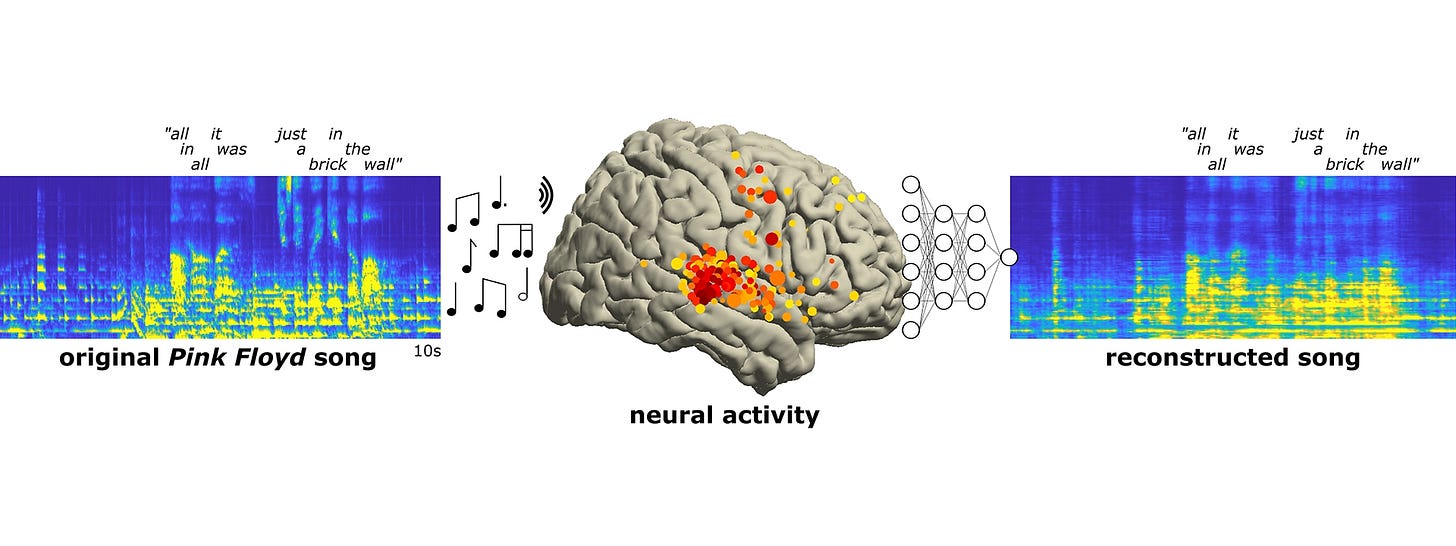Life Made Easier PART 1: Reshaping Communication
Explore the ways Artificial Intelligence will be (and already is) reshaping our world – time to TALK about communication, telepathy + some fun TL;DR bullet points!
How AI is Transforming Communication and Accessibility
AI's capacity to convert spoken words into text and seamlessly translate languages is going to revolutionize the way we communicate. Imagine having subtitles for real-world scenarios, providing an almost cinematic experience to everyday life. This innovation holds the promise of bridging communication gaps, particularly benefiting the deaf and hard of hearing. The integration of AI with augmented reality (AR) technologies further augments this potential, offering a new dimension of accessibility and inclusion.
But what if AI could do more than just transcribe speech? What if it could read out messages in your own voice for the recipient, enhancing authenticity and emotional connection in written communication? This advancement could redefine the dynamics of interpersonal interactions, providing a unique way to maintain personal connections with people. It would also provide an opportunity to hear people-long gone. Furthermore, the application of real-time AI-generated subtitles for calls addresses a long-standing frustration: poor connections leading to misunderstandings and annoying interruptions.
Okay, this is not crazy at all, most of what I’ve mentioned (except for the AR part obviously) already partly exists in accessibility settings or some app. But way more than that is already in the works:
What would you do if I said… TELEPATHY?
(Well, not quite, but AI mind-reading holds a lot of potential be it good or bad…)
Researchers have already developed an AI decoder that translates brain activity into text, non-invasively reconstructing speech with remarkable accuracy. Utilizing large language models, the decoder matches brain activity patterns to word meanings, providing insights into thoughts and speech. This innovation holds potential for restoring speech in patients affected by neurological conditions, while also offering a new horizon for communication and understanding the brain’s intricate workings. (Source here)
And the invasive method is already ways ahead of the game. Check this out:
Although, to be honest, I am sincerely hoping for the non-invasive methods to be successful enough for the invasive option to be redundant… it’s scary to think that cybernetics may not be Sci-Fi for much longer. (Cyberpunk IRL? Oh no…)
There is a non-invasive method to access and interpret brain activity: an AI-driven decoder that translates brain activity into text. This opens up avenues for understanding the complexities of human thought and cognition, potentially revolutionizing the field of neurology eventually.
From a medical perspective, the breakthrough holds immense promise for patients who have lost the ability to communicate due to strokes, motor neurone disease, or other neurological conditions. By using AI to decode brain signals associated with speech, this technology offers the tantalizing prospect of restoring speech and communication in individuals who have lost these abilities.
Additionally, the implications extend to neuro-rehabilitation, as the AI-based decoder could potentially aid individuals recovering from brain injuries or surgeries. The ability to non-invasively access and interpret brain activity patterns allows for more targeted and personalized rehabilitation strategies, tailoring therapies to individual needs and progress.
Medical Importance of “Custom-Made”
Bridging the Gap Between Custom-Made Medical Solutions and Neurological Diversity As discussed previously, custom-made items have the potential to revolutionize our approach to both fashion and medica…
Furthermore, the technology's capacity to generate text from brain activity holds the potential to deepen our understanding of the brain's inner workings, shedding light on how thoughts, ideas, and even dreams manifest in neural patterns. This knowledge could potentially reshape our understanding of cognitive processes and neurological disorders, opening new horizons in both medical research and clinical practice.
As the technology advances and becomes more portable, the potential for widespread and diverse applications expands further than diagnostics, communication, and rehabilitation. We could perhaps one day use it to directly communicate with animals. But more on that some other time…
Ever wanted to “think up” a song with only your brain?
No? Well, neuroscientists managed to reconstruct a song from neural activity. (although I’d argue it is far from perfect but this is only the beginning)
Okay, now it’s a little crazy. It’s not too hard to imagine this stuff making telepathy real one day (not yet, so don’t worry too much about it). The implications are already huge even if that doesn’t happen. We’ve been using our mouths and hands (writing with pens and later on typing on keyboards) to communicate for the longest time, we have no idea what the implications of using our brains to communicate may entail. If you haven’t read it, I shamelessly recommend my own writing on why future generations may be illiterate:
Conclusion
It’s fun to think about future possibilities and have crazy ideas about how tech can end up looking like magical phenomenon. But it’s easy to forget that we already have come very far. There’s so much more left to create, invent, explore and understand. Who knows, maybe this period of time will be known as an important tech revolution in the future… or maybe it will all come to a halt with AGI, but we will talk about that some other time.
The potential of AI is vast as it is offering solutions to challenges that were once considered insurmountable. Embracing these possibilities while navigating ethical complexities and societal changes will be pivotal in harnessing AI's true potential.
BONUS: I link to more about this here in a few weeks (or more if I forget)
We’ve already developed telepathy if you think about it. If telepathy is “near-instant communication from one brain to another in the distance”, then we kind of already have it. Calls, Messages and SMS; and even group calls and social media for group telepathy. We just use our hands and mouths for it instead of our brains.
TL;DR: Here’s how the ads for this stuff may sound like
AI speech to text (& potential translation) - Ever wanted subtitles for the real world? AI and AR/XR can do that for you! This is going to be CRAZY for deaf or hard of hearing people because with an included text to speech method they can quite literally reach a point of “normality”!
Voice messages are boring? Picture this instead: AI reading out messages (DMs/PMs) in your own voice to the person on the receiving end, and better: you can choose how creepy it sounds!
Fear bad connection no longer because AI creating subtitles for your calls!
Resources
Relevant links can be found within the article.







